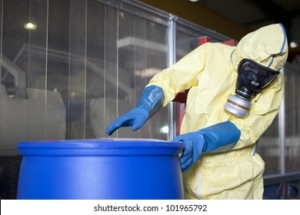Your doors make a statement to people visiting your home and are one of the first impressions you give to those passing by. This is why upgrading them to something stylish and modern is so important.

Aside from the aesthetic benefits, new doors can also add value to your property. Whether you’re considering selling in the near future or just want to enjoy your home for longer, there are many reasons to upgrade your doors.
Your doors play a critical role in keeping your home secure. If you have a door that looks like it would be easily pushed open or broken, it’s time to replace it. New doors are made from stronger materials and are much more difficult to break into. They are also more likely to have advanced security features, which help keep your family and belongings safe.
If you’re considering selling your home in the future, a new door replacement can significantly increase your property value. Potential buyers will notice the stylish, modern look of your doors and be more likely to pay you a fair price for your home. Additionally, new doors can provide a greater return on investment than many other remodel projects, such as replacing flooring or painting walls.
Upgrading your exterior doors is also a great way to boost your curb appeal. An outdated or damaged door sends the message that your entire home is in disrepair, which can turn off prospective buyers. New doors are available in a variety of styles and finishes, so you can find the perfect look to complement your home’s style.
When you work with a professional contractor, you can also choose to have your doors customized with add-ons to enhance their functionality and security. For example, you can install a peephole that helps you see who is at the door before you answer it. Or, you can get a smart lock that gives you access to your home through an app on your phone.
You can also choose a door with minimal glass to improve your privacy and provide more protection from the elements. If you have large windows around your doors, you may feel like you never have any privacy because passersby can always see inside. A new door with less glass can give you the privacy you desire without sacrificing natural light or views.
In addition to upgrading your doors’ appearance and durability, you can also make your home more energy efficient with the right door choice. A quality, energy-efficient door will save you money on your utility bills and reduce the amount of air that escapes your house during the cold Minnesota winters.
Increased Home Value
A new door is a great way to add value to your home. It’s something that potential buyers will definitely notice, and it can help you stand out from other homes on the market. This is particularly true if your old doors are rotting, rusty, or otherwise in disrepair. It’s also a good idea to invest in energy-efficient doors, which can help lower your home’s utility bills and reduce your carbon footprint.
Another important reason to upgrade your home with a new door is the increased curb appeal. If your old doors are dingy, worn, or damaged, they will give the impression that your home is outdated and out of style. New doors, on the other hand, will add a more modern look and feel to your home, making it more appealing to prospective buyers.
Upgrading your home with a new door is one of the most cost-effective ways to increase its resale value, and it’s also a great way to improve your overall security and comfort. If you’re planning to sell your home in the future, a new door will make it more attractive to potential buyers and help you get the most out of your investment.
However, not all homeowners are interested in selling their homes in the near future. Many are more focused on making home improvements that will add value and increase the comfort of their living space, without adding a lot of extra expenses. Replacing your doors with new ones is a fantastic option for this, as it can provide several benefits that will add up over time.
If you’re considering upgrading your home with a new door, contact Long Doors today to receive a free estimate. We offer a wide variety of styles, colors, and materials to choose from, so we’re sure we can find the perfect fit for your home. Our doors are crafted with high-quality materials, so you can be sure that they will last for years to come and increase your home’s resale value. We can even replace your existing windows and hardware to create a seamless look throughout your house.
Improved Aesthetics
A new door replacement is a great way to upgrade your home’s aesthetics. Whether your doors are made of wood or glass, you can choose from a wide variety of designs and colors to fit your taste. You can even select a door that allows more light to enter your home, or less, depending on your preferences.
Upgrading the aesthetic of your home can also help boost its resale value. Your front door is the first thing that people will see, so it’s important to make a good impression. A well-designed, stylish door can catch the attention of potential buyers and encourage them to take a closer look at your property.
In addition to boosting your curb appeal, a new door can also make your home more energy efficient. Older doors can let in a lot of heat during the winter and cool air during the summer, which can lead to higher energy bills. Newer doors are designed with insulation in mind, so they keep your home warmer during the winter and cooler during the summer.
Another reason to replace your old doors is that they may be worn down, damaged, or outdated. Many homeowners replace their doors when they notice stains, cracks, or holes in them. In some cases, the door frame itself may be warped or rotting, making it unfit for use.
Regardless of the reason for your door replacement, a professional can ensure that you get the best quality products and a smooth installation process. When choosing a contractor, look for one with a strong reputation in the industry and a history of providing high-quality work.
While most homeowners will focus on upgrading the flooring and walls of their homes when undergoing renovation, an overlooked upgrade option that can have just as significant an impact is new doors. Upgrading your doors can add a fresh, modern look to your home that will instantly improve its aesthetics and increase its resale value.
Increased Energy Efficiency
In addition to their aesthetic appeal, a new door replacement can help you save on your energy costs. New insulated doors can prevent heat from escaping during the winter and help keep cool air inside during the summer, reducing your utility bills and making it easier to maintain a comfortable temperature throughout your home.
The insulation that a new door provides also helps to reduce outside noise levels, further contributing to a quieter and more comfortable living environment. Upgrading your doors to a more energy-efficient option is also a great way to improve your home’s environmental impact, as it will decrease greenhouse gas emissions and contribute to a healthier planet.
Aside from the aesthetic benefits that a new front door can offer, it’s also an excellent investment for your property’s overall resale value. Potential homebuyers are likely to be more enthused about your home if its exterior looks fresh and inviting, and a modern-looking door is a surefire way to impress them and make it more appealing than any other upgrades you could do.
Over time, it’s natural for the foundation of your home to shift and settle. This can sometimes cause gaps around the edges of your windows and doors, allowing air and water to leak into your house. Replacing your doors when you notice these gaps can prevent energy loss and keep your home more comfortable.
When you’re choosing a contractor to perform your new door replacement, look for one that has a good reputation in your area and can provide you with a high-quality product for an affordable price. The more reputable contractors will have references and satisfied customers that can attest to their work quality, and they will be able to answer any questions you may have about the project.
Upgrading your doors is a quick and easy way to increase your home’s value, improve its security, and make it more comfortable. It’s a cost-effective upgrade that can be done with less time and money than other major renovation projects, such as installing a new roof or painting your home’s exterior. Contact your local door professionals to learn more about the range of options available for your next door replacement.








